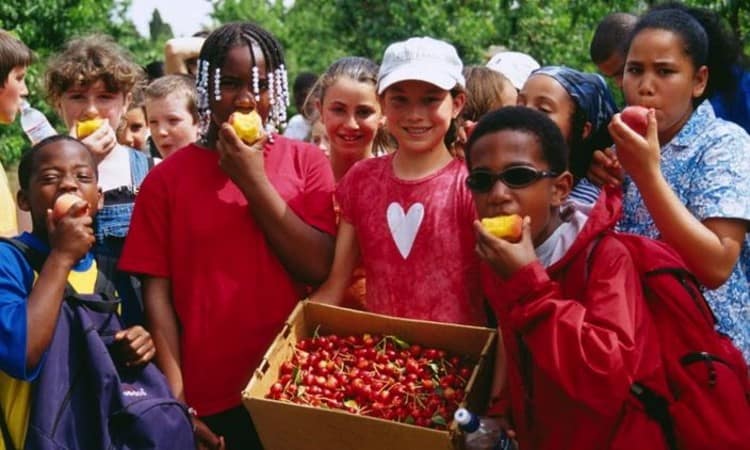As a longtime advocate for improving school meals, I really shouldn’t have been surprised at an experience I had before Oakland’s board of education one night in early 2012. The board meeting, as usual, was stretching on toward midnight, and I was scheduled to make the case for US$40 million worth of recommendations from our Rethinking School Lunch Oakland feasibility study.
The Center for Ecoliteracy had entered into a partnership with Oakland Unified School District and its visionary nutrition services director Jennifer LeBarre to create a roadmap for school food systems change. Many of our recommendations were going to be considered for inclusion in the district’s Facilities Master Plan, and represented a significant impact on the budget.
Following my presentation, one board member expressed doubts about the importance of school meals. His stance was that the district was in the business of teaching reading and writing, and not in the business of feeding kids. He thought that students would be fine eating bologna sandwiches in the gym, like he did when he was in school.
What came next, however, was surprising.
A representative of the teachers’ union was in attendance that evening, and took the board member to task. She scolded him for not understanding the intimate relationships among nutrition, cognition, and academic success.
A month later, we worked with a parent group from that board member’s district, prior to a meeting with him to discuss the Facilities Master Plan and the bond associated with it. The parents addressed the importance of school meals from a range of perspectives, including health, academic achievement, and school finances. Then they presented him a petition signed by hundreds parents asking for his support.
He told them that he “got the message.” From then on, he became an ally supporting recommendations for serving healthy, freshly prepared meals.
Afterwards, I realized that other school food advocates face similar situations and that the Center could make a contribution by creating resources for their use. I imagined something like a press kit with large-print factsheets emphasizing key points and footnotes providing the research to back up them up. The materials could reinforce the presentations of advocates, who often have a limited time to make their case to busy board members, superintendents, and other decision makers.
And so Making the Case for Healthy, Freshly Prepared School Meals began.

The Center’s senior editor, Michael Stone, collected and summarized extensive research that documents the links between school food and nutrition, academic success, and student health, while demonstrating how better school meals can also improve school finances and benefit local economies. Our creative director, Karen Brown, adapted the topline findings from the report into a PowerPoint that advocates can customize for presentations to decision makers in their districts.
In August, the Center released a short animated video and companion infographic that complement the research document and PowerPoint. They were created with the accomplished digital animation agency Monstro Design.
As Karen said of the video, “Here is every good argument for improving school food – in two minutes.”
The Making the Case suite of resources has been well received since its release. We hope that it proves to be useful to school food advocates everywhere. Many of our friends and colleagues are doing tremendous work, bringing effective innovations to schools and districts across the country. They deserve the resources they need in order to make the case for improving school food. We are pleased to be able to support them.











